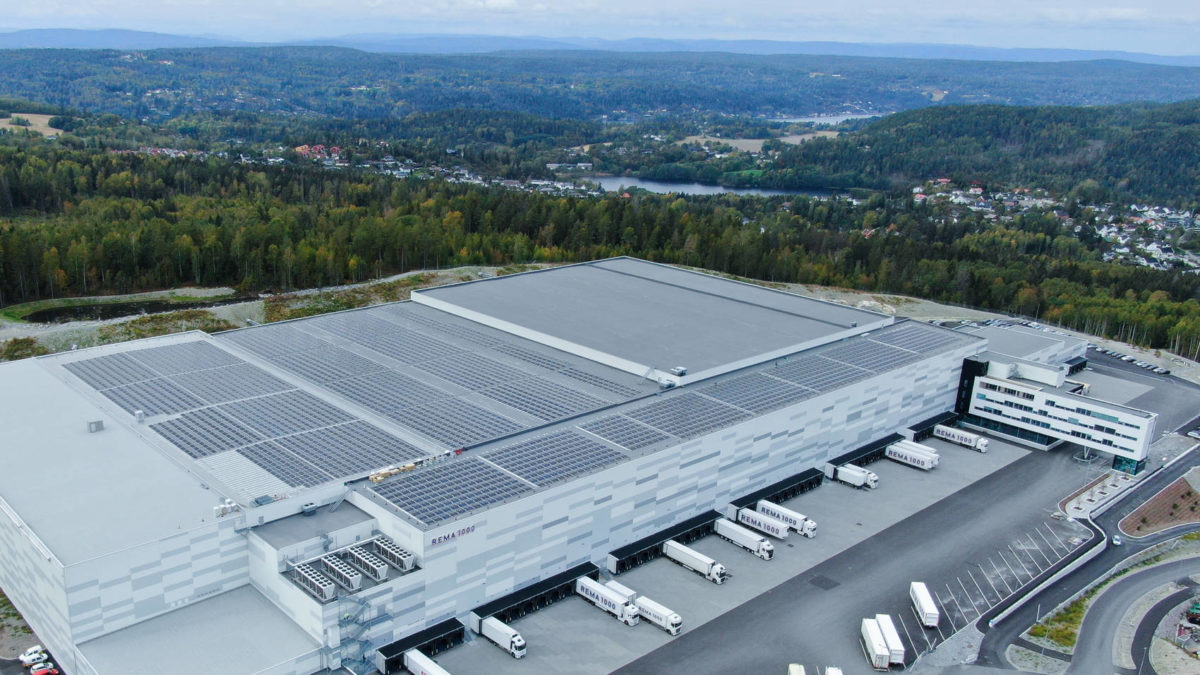The modest, largely residential Norwegian solar sector may be about to enter a new, commercial installation phase.
Siemens-owned inverter manufacturer Kaco has announced it will ship its ‘blueplanet 92.0 TL3 string inverter’ to a 2 MW commercial rooftop project just south of Oslo, in Vinterbro. The array will be installed on a cold storage facility belonging to supermarket chain Rema 1000.
The project is under construction and will be completed this year, according to Kaco. The roof is the first in Norway to use 1500 V technology which, according to consultant engineer Multiconsult, permitted a 10-15% cost reduction. The longer strings which are an option on bigger commercial roofspaces entail less wiring and fewer power electronics, said the German inverter maker.
The project stakeholders had reportedly been hesitant initially but the project received support from state-owned emissions-reduction agency Enova via its pluskundeordningen support scheme and is now expected to bank significant energy cost savings.
Kaco highlighted the use of silicon carbide semiconductor modules in the inverters, which can operate at temperatures of -25 to +50 degrees Celsius.
Silicon carbide
To date, the industry’s clear preference has been insulated-gate bipolar transistors made from silicon. Metal-oxide-semiconductor field-effect transistors made from silicon-carbide offer a range of advantages but their limited availability, price point and requirement for a comprehensive redesign of the inverter power unit – as well as concerns over semiconductor longevity – have been hurdles to full market maturity. Kaco has been an early mover in bringing the technology to market with the blueplanet 125 TL3.
Norway last year saw its PV capacity reach record levels with 23.5 MW of newly installed systems, marking year on year growth of 29%. By the end of 2018, the Scandinavian nation had reached 68 MW of cumulative capacity.
“More and more companies are taking solar energy into their portfolios,” said Trine Kopstad Berenten, general manager of Solenergiklyngen, the Norwegian Solar Energy Cluster. “In this way, solar energy becomes a more integrated part of the energy mix together with hydropower and district heating.”
Industrial applications are gaining traction in Norway. Cold storage facilities are a good fit for PV as their energy consumption rises during sunshine hours and summer months.
This content is protected by copyright and may not be reused. If you want to cooperate with us and would like to reuse some of our content, please contact: editors@pv-magazine.com.




4 comments
By submitting this form you agree to pv magazine using your data for the purposes of publishing your comment.
Your personal data will only be disclosed or otherwise transmitted to third parties for the purposes of spam filtering or if this is necessary for technical maintenance of the website. Any other transfer to third parties will not take place unless this is justified on the basis of applicable data protection regulations or if pv magazine is legally obliged to do so.
You may revoke this consent at any time with effect for the future, in which case your personal data will be deleted immediately. Otherwise, your data will be deleted if pv magazine has processed your request or the purpose of data storage is fulfilled.
Further information on data privacy can be found in our Data Protection Policy.